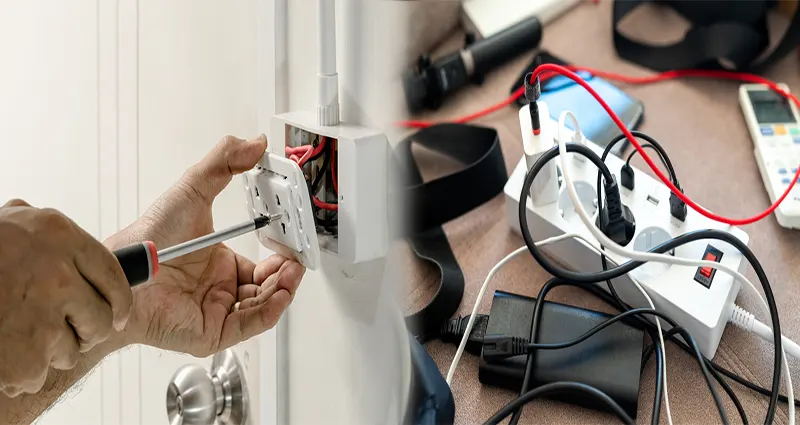When electrical outlets in your home suddenly stop working, it can be a frustrating inconvenience that disrupts your daily routine. However, before calling an electrician, there are several troubleshooting steps you can take to identify the root cause of the issue and potentially resolve it on your own. In this comprehensive guide, we’ll walk you through the steps to troubleshoot electrical outlets that have stopped working.
1. Check Other Outlets and Appliances
Start by checking other outlets in the same room or area to determine if the problem is isolated to a single outlet or affects multiple outlets. Plug in different appliances or devices to see if they are receiving power and functioning properly. This initial step can help narrow down the scope of the issue.
2. Reset Circuit Breakers
If the affected outlet is part of a circuit that has tripped, locate the circuit breaker panel in your home and check for any tripped breakers. Reset the tripped breaker by switching it off and then back on to restore power to the outlet. It’s important to reset the circuit breaker properly to avoid potential safety hazards.
3. Test GFCI Outlets
Ground Fault Circuit Interrupter (GFCI) outlets are commonly found in bathrooms, kitchens, and outdoor areas. If the non-working outlet is a GFCI outlet, check to see if it has tripped. Press the “reset” button on the GFCI outlet to restore power. Sometimes, multiple outlets are connected to a single GFCI outlet, so checking and resetting all GFCI outlets in the area is essential.
4. Inspect for Loose Connections
Turn off the power to the affected outlet at the circuit breaker panel before proceeding with this step. Remove the outlet cover plate and inspect the wiring for any loose connections, exposed wires, or signs of damage. Tighten any loose screws on the outlet terminal connections and ensure that all wires are securely attached to the appropriate terminals.
5. Test for Continuity
Using a digital multimeter or a non-contact voltage tester, test the outlet to check for continuity and verify if power is reaching the outlet. Follow safety precautions and be cautious when working with electricity. If the outlet is not receiving power, the issue may be with the wiring or other components within the electrical system.
6. Call a Professional Electrician
If you have completed the troubleshooting steps outlined above and the electrical outlet is still not working, it may be time to consult a professional electrician. An electrician can conduct a thorough inspection, identify the underlying cause of the problem, and safely repair or replace the outlet to restore power to your home.
By following these systematic troubleshooting steps, you can effectively diagnose and address electrical outlets that have stopped working in your home. Remember to prioritize safety, exercise caution when working with electricity, and seek professional assistance if needed to ensure the integrity and reliability of your electrical system.











